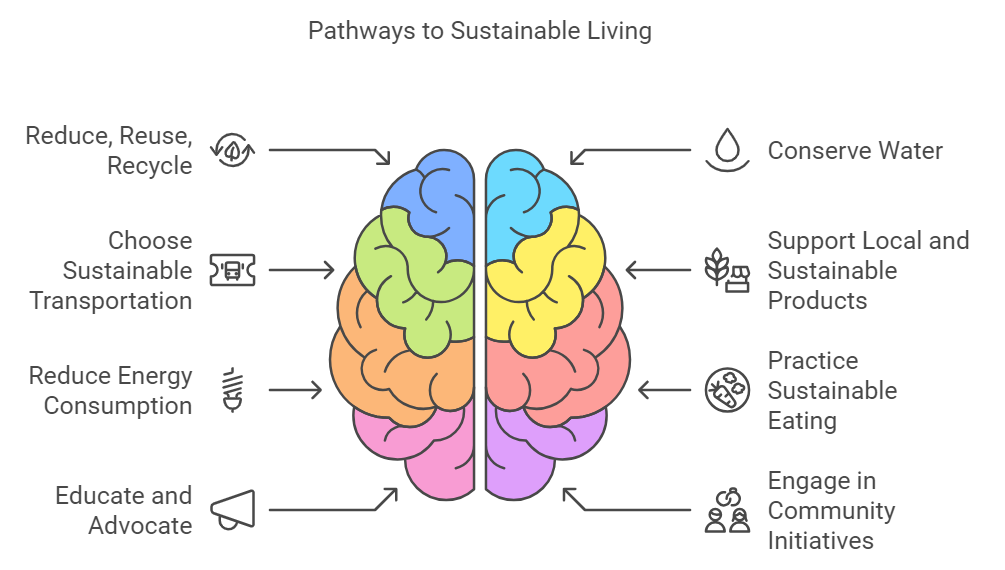Sustainable living is a lifestyle choice that aims to reduce an individual’s or society’s use of the Earth’s natural resources and personal resources. This document outlines various best practices that can help individuals and communities adopt more sustainable habits, ultimately contributing to a healthier planet and a more equitable society.

1. Reduce, Reuse, Recycle
- Reduce: Minimize waste by consuming less. Evaluate your purchases and avoid unnecessary items.
- Reuse: Find new ways to use items instead of discarding them. Consider donating or selling items you no longer need.
- Recycle: Familiarize yourself with local recycling programs and ensure that recyclable materials are properly sorted.
2. Conserve Water
- Fix leaks in your home to prevent water wastage.
- Use water-efficient fixtures and appliances.
- Collect rainwater for gardening and other non-potable uses.
3. Choose Sustainable Transportation
- Walk, bike, or use public transportation whenever possible to reduce carbon emissions.
- Carpool or share rides to decrease the number of vehicles on the road.
- Consider electric or hybrid vehicles if driving is necessary.
4. Support Local and Sustainable Products

Buy locally-sourced food to support local farmers and reduce transportation emissions.
Choose products with minimal packaging and those made from sustainable materials.
Look for certifications like Fair Trade, Organic, or Rainforest Alliance.
5. Reduce Energy Consumption
- Switch to energy-efficient appliances and light bulbs.
- Unplug devices when not in use to prevent phantom energy consumption.
- Consider renewable energy sources, such as solar panels, for your home.
6. Practice Sustainable Eating
- Incorporate more plant-based meals into your diet to lower your carbon footprint.
- Reduce food waste by planning meals and using leftovers creatively.
- Grow your own vegetables and herbs if possible, even in small spaces.
7. Educate and Advocate
- Stay informed about environmental issues and sustainable practices.
- Share knowledge with friends and family to inspire collective action.
- Support policies and initiatives that promote sustainability at local, national, and global levels.
8. Engage in Community Initiatives
- Participate in local clean-up events, tree planting, or community gardens.
- Join or support organizations focused on sustainability and environmental protection.
- Collaborate with neighbors to create a more sustainable community.
Conclusion
Adopting sustainable practices is essential for the well-being of our planet and future generations. By making conscious choices in our daily lives, we can contribute to a more sustainable world. Each small action counts, and together, we can create significant change.

I like this post, enjoyed this one regards for posting. “The universe is not hostile, nor yet is it unfriendly. It is simply indifferent.” by John Andrew Holmes.
Great post, you have pointed out some superb details , I likewise believe this s a very good website.